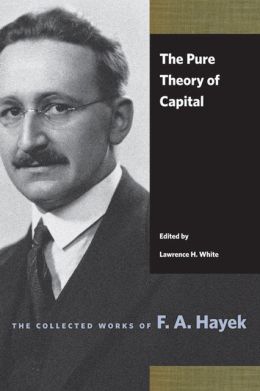London: Routledge & Kegan Paul, 1941/2 (also 1950 edition); Chicago: University of Chicago Press, 1941 (also 1950, 1952 and 1975 editions); xxxi, 454 pp. (Spain 1946, Japan 1951 and 1952).
The Pure Theory of Capital, F. A. Hayek’s long-overlooked, little-understood volume, was his most detailed work in economic theory. Originally published in 1941 when fashionable economic thought had shifted to John Maynard Keynes, Hayek’s manifesto of capital theory is now available again for today’s students and economists to discover. Offering a detailed account of the equilibrium relationships between inputs and outputs in an economy, Hayek’s stated objective was to make capital theory—which had previously been devoted almost entirely to the explanation of interest rates—“useful for the analysis of the monetary phenomena of the real world.” His ambitious goal was nothing less than to develop a capital theory that could be fully integrated into the business cycle theory.
Online:
Amazon
Free Online Version

